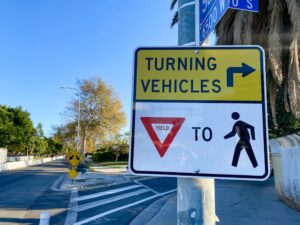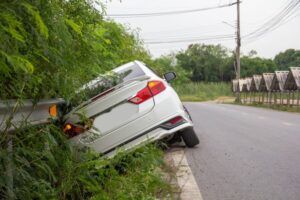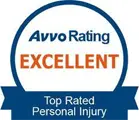Do I Need a Boating Accident Lawyer?
You may need a Tampa boating accident lawyer so you can focus on your health after your accident. A lawyer will also ensure your case goes smoothly while protecting you from anyone who may want to see your case fail (like liable parties).
Even if you were physically and psychologically able to handle the demands of your boating accident claim or lawsuit, a lawyer’s experience, financial support, and other forms of support may benefit you.
Many boating accident victims are struggling with physical pain, distress, and other challenges, making a lawyer’s help all the more valuable.
Request A Free Consultation Today!
Many Boat Accident Victims Cannot Handle Their Own Cases (Not Effectively, at Least)
Boat accidents can cause severe injuries, including deep lacerations, traumatic brain injuries, internal bleeding, broken bones, and a host of other medical conditions. These conditions can leave victims completely consumed by their physical symptoms, often struggling with impairments that hinder daily tasks.
bleeding, broken bones, and a host of other medical conditions. These conditions can leave victims completely consumed by their physical symptoms, often struggling with impairments that hinder daily tasks.
Additionally, many boat accidents can cause symptoms of post-traumatic stress disorder (PTSD), as well as other types of pain and suffering. In some cases, boat accidents are fatal, and survivors are left facing overwhelming grief.
Those who try to handle their own boat accident cases may:
- Quickly realize how difficult it is to lead a successful claim or lawsuit
- Experience worsening physical and psychological symptoms due to case-related stress
- Struggle to find the time to build their case and meet their recovery goals
- Fail to obtain all the compensation they deserve because they cannot present a high-quality case
Lawyers know asking a boat accident victim to recover and compile a compelling insurance claim or lawsuit is too much. That’s why boat accident attorneys help those harmed by boat accidents get the compensation they deserve.
When to Hire a Lawyer After a Boat Accident
Once you decide to hire an attorney, do not wait to find the right law firm for your boat accident claim or lawsuit. The only priority before hiring a boat accident lawyer is getting emergency medical attention. Once your life is no longer in imminent danger, hire an attorney.
Some of the reasons why you should not wait to hire your boat accident lawyer are:
Statutes of Limitations
Most state legislatures require attorneys to file civil cases within a certain time period. In Florida, for example, Florida Statutes § 95.11 generally requires attorneys to file boat accident cases within two years of the accident.
While exceptions may apply to such statutes—if the accident occurred on federal waterways, for example—you should not plan on one in your case. Hire your lawyer as soon as possible so they can file the case before any statutes of limitations expire.
Time-Sensitive Evidence
As part of their representation, your lawyer will seek out all evidence that benefits your case, which may include:
- Eyewitness accounts related to the boat accident
- Any video footage from the accident, which may most likely come from cell phones or handheld cameras
- Your account of the accident
- An expert’s reconstruction of the accident
- Any incident report, including a police report, related to the boat accident
Evidence can disappear with time. For instance, witness testimony is most reliable when it is taken shortly after a boat accident. Your lawyer will quickly seek all relevant evidence, but you must hire them to lead your case.
Insurers and Other Liable Parties Trying to Compromise Your Case
Despite insurance companies (and certain other liable parties) having many financial resources, their mission is to maximize profits and minimize liabilities. Nobody relishes the opportunity to pay someone else, which means you will seek money from individuals or institutions who may not want to pay you.
To avoid paying the compensation you deserve, liable parties (including insurers) may:
- Blame you for causing the boat accident
- Claim that you were impaired at the time of the accident
- Claim that you are exaggerating injuries or damages related to the boat accident
- Try to twist your words or have you make errors when giving recorded statements
- Offer a lowball settlement and pressure you to accept
- Engage in other bad-faith tactics meant to undermine your claim or lawsuit
As soon as you retain a boating accident attorney, they will take over communications with insurers, civil defense lawyers, courts, and others involved in your case. This will protect you from bad-faith tactics.
The Benefits of Hiring a Boating Accident Lawyer
If you hire a boating accident attorney, expect to have:
As Much Time as You Need to Recover
When you hire a lawyer, the time you would have spent handling your case can go towards your recovery. You can follow every step of your treatment plan, from rest to surgery and rehabilitation, while your lawyer works on your case.
The Full Financial Support of Your Law Firm
Your boating accident lawyer will build the strongest case possible without receiving any upfront or out-of-pocket payment.
A successful law firm’s resources will exceed what you can provide on your own, including:
- Experts who can lend significant credibility to an already strong case
- Accident reconstructions, which can especially help when no video footage captures a boating accident
- Mock courtrooms, which can help if your case goes to trial
- Paralegals and support staff who can ensure your case moves forward as efficiently as possible
The best law firms spare no expense when building cases. These firms know that because their attorneys’ fees are tied to the case outcome, obtaining as much compensation as possible is in their interest (and the client’s). This mission means they will craft the best case, no matter the cost.
The Benefit of Your Lawyer’s Experience
We benefit from those who have more experience than us. In this way, a lawyer can use their experience to your benefit.
Experienced boat accident lawyers know:
- How insurance companies and other liable parties may try to avoid paying the money they owe the boat accident victim
- The types of evidence that can be valuable in a boat accident case
- What legal and claim-specific strategies may work in a boat accident case
- Approximately how much a boat accident can cost
- What injuries are common to boat accident victims
- Challenges that may present themselves during a boat accident claim or lawsuit
A lawyer’s experience can also benefit the client in ways that are difficult to pinpoint. For instance, your lawyer’s background may make them a confident, fearless negotiator. Just know that when you hire a lawyer, their experience benefits you.
Your Boat Accident Lawyer Will Make Every Detail of Your Case Their Business
Attorneys like to have complete control of cases, and this is usually in the client’s best interests. By having total oversight of your case, your lawyer will ensure every detail is correct, and your rights are safe.
Some of the duties your boating accident lawyer in Tampa will handle for you include:
Securing Evidence Related to Your Boat Accident
Your attorney will use evidence to prove:
- How the boat accident happened
- Whose negligence caused the accident
- How the accident may have been prevented
- How liable parties’ negligence led directly to your injuries (or a loved one’s passing)
Useful evidence can include eyewitness accounts, photographs of damage to a boat, video footage, and an expert’s accident reconstruction.
Detailing Damages from the Boat Accident
Your attorney will need to prove how the boat accident has caused you harm and may do so with:
- X-rays, MRIs, CT scans, and other medical images
- All medical bills related to the boat accident
- Your account of the distress and anguish you’ve suffered since the boat accident
- A mental health expert’s documentation of your pain and suffering
- Invoices related to property damage that occurred during the boat accident
Your attorney will also work to prove lost income and other professional damages related to the boating accident.
Calculating Exactly How Much Money You Deserve
Your attorney will not negotiate a settlement until they know exactly how much money you deserve. While your legal team will work to resolve your case as soon as possible, the most important outcome is that you receive all the compensation you deserve.
your legal team will work to resolve your case as soon as possible, the most important outcome is that you receive all the compensation you deserve.
Negotiating the Settlement You Deserve
Your attorney will seek a settlement that reflects:
- Economic damages, such as lost income and the cost of replacing damaged property
- Non-economic damages, which include pain and suffering
- Both damages you have already suffered and damages you will face in the future
Attorneys make sure to account for even the smallest detail when calculating a case value. You will only have one opportunity to secure the compensation you deserve, and your lawyer will make the most of that opportunity.
Leading Any Lawsuit or Trial You Choose to Pursue
If your case requires filing a lawsuit or going to trial, your boat accident lawyer will represent you in these legal matters. The ability to immediately pivot to a lawsuit (and a trial, if necessary) is one of the many benefits of hiring an attorney.
Damages You May Receive Money for Through a Boat Accident Claim or Lawsuit
The term “boating accident” includes a range of incidents, from cuts caused by a spinning propeller to collisions between boats. The type of boat accident you experienced and the injuries you have suffered will be critical factors in the types of damages you suffer.
Some common damages lawyers see in boat accident victims include:
Pain and Suffering
Those who experience boat accidents may not only suffer physical injuries, but they can also face:
- Physical pain and discomfort, which can be chronic
- Emotional anguish
- Psychological distress
- Lost quality of life
- Sleep problems
- Post-traumatic stress disorder (PTSD)
- Depression
- Anxiety
Attorneys know how to help with this pain and suffering. Your attorney may even arrange for you to see a mental health professional who will diagnose and document such issues.
Mental Health Treatment Costs
If you need any medication, counseling, or other types of treatment for your psychological and emotional difficulties, your attorney will seek compensation to cover your treatment costs.
Medical Expenses
Your attorney will calculate the total cost of medical care related to the boat accident. Expect your legal team to consider every medical item and service from the moment your accident happens through the day you reach maximum medical improvement (MMI).
Professional Damages
A boat accident can lead a victim to face:
- Lost income
- Lost chances for performance-related incentives like bonuses
- The inability to earn promotions
- Diminished earning power
- Permanent loss of one’s ability to work
Your lawyer’s concern will be the details of your career, the severity of your injuries, and the precise impact of the injuries on your career. Your legal team will determine the precise professional cost of your boat accident.
Property Expenses
Whether or not your own vessel was involved in the boat accident, you may need to repair or replace property damaged during the accident. Your attorney will account for such property expenses as they calculate how much compensation you deserve.
Types of Boat Accidents You May Hire a Lawyer After
If you lost a loved one or suffered injuries because of a boat accident, a lawyer can help.
Some common incidents that can lead to insurance claims and lawsuits are:
- Drowning incidents, as 75 percent of fatal boating accident victims die from drowning
- Collisions between multiple boats
- Collisions between boats and fixed objects
- Accidents where a boat operator strikes or runs over someone in the water
- Dangerous driving, which can result in boat occupants suffering injuries
- Watersport-related injuries
- Accidents resulting from defective vessels
- Fires
Much can go wrong when boating. If anyone did anything to cause you hardship, let a lawyer seek fair compensation for your damages.
Can I Afford to Hire a Boat Accident Lawyer?
Due to contingency fees, anyone can hire a boat accident lawyer at no upfront or out-of-pocket cost. You shouldn’t wait to do so. Conduct your research and find the right Tampa boating accident attorney for your case today.









 Florida – being a no-fault insurance state – offers specific legal avenues to recover costs associated with injuries after a pedestrian accident. The state requires Personal Injury Protection (PIP) for owners of vehicles with a current Florida registration pursuant to
Florida – being a no-fault insurance state – offers specific legal avenues to recover costs associated with injuries after a pedestrian accident. The state requires Personal Injury Protection (PIP) for owners of vehicles with a current Florida registration pursuant to 
 While each pedestrian accident has specific circumstances, there are common root causes where the driver’s fault may be established. Below are some of the most common ways a driver may be legally at fault for hitting a pedestrian:
While each pedestrian accident has specific circumstances, there are common root causes where the driver’s fault may be established. Below are some of the most common ways a driver may be legally at fault for hitting a pedestrian: When a pedestrian is involved in an accident, insurance companies may attempt to minimize their liability by shifting some or all of the blame onto the pedestrian. Below are some of the most common blame tactics used by insurers to make the pedestrian at fault for a car accident:
When a pedestrian is involved in an accident, insurance companies may attempt to minimize their liability by shifting some or all of the blame onto the pedestrian. Below are some of the most common blame tactics used by insurers to make the pedestrian at fault for a car accident: There are plenty of factors that may affect the amount of money you can receive when pursuing
There are plenty of factors that may affect the amount of money you can receive when pursuing  Victims of pedestrian accidents may face a wide range of injuries, which vary in severity from minor bruises to life-changing conditions like paralysis and head trauma. Below are the common types of injuries that are likely to result from a pedestrian accident:
Victims of pedestrian accidents may face a wide range of injuries, which vary in severity from minor bruises to life-changing conditions like paralysis and head trauma. Below are the common types of injuries that are likely to result from a pedestrian accident:
 Cities like Seattle, with its dense neighborhoods and wide roads, present unique challenges for pedestrian safety. Drivers have a particular responsibility to ensure the streets are safe for those on foot. Some of the tips for drivers to minimize the risk of pedestrian accidents in the city include:
Cities like Seattle, with its dense neighborhoods and wide roads, present unique challenges for pedestrian safety. Drivers have a particular responsibility to ensure the streets are safe for those on foot. Some of the tips for drivers to minimize the risk of pedestrian accidents in the city include:




 The medical bills for whiplash can escalate quickly, as they often include costs for initial emergency room visits, diagnostic imaging tests such as X-rays or MRIs, follow-up visits, physical therapy sessions, medications for pain relief, and potential chiropractic care. The financial burden can be substantial, making it pivotal for survivors to seek fair compensation for these expenses.
The medical bills for whiplash can escalate quickly, as they often include costs for initial emergency room visits, diagnostic imaging tests such as X-rays or MRIs, follow-up visits, physical therapy sessions, medications for pain relief, and potential chiropractic care. The financial burden can be substantial, making it pivotal for survivors to seek fair compensation for these expenses. The extent of the injury plays a significant role in determining the compensation amount. More severe injuries typically require more extensive medical treatment, potentially resulting in higher medical bills. If the injury leads to a lengthy recovery period or permanent disability, this could result in greater losses in terms of income.
The extent of the injury plays a significant role in determining the compensation amount. More severe injuries typically require more extensive medical treatment, potentially resulting in higher medical bills. If the injury leads to a lengthy recovery period or permanent disability, this could result in greater losses in terms of income.












